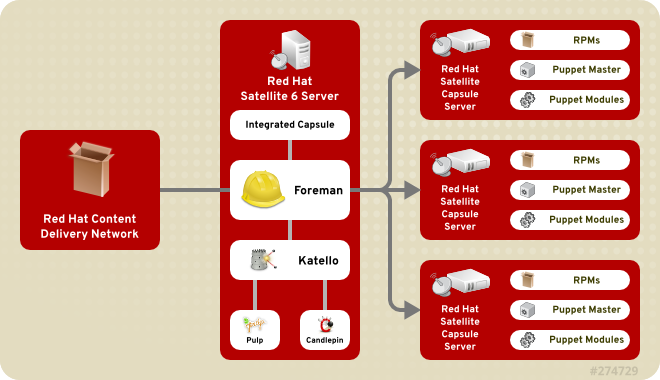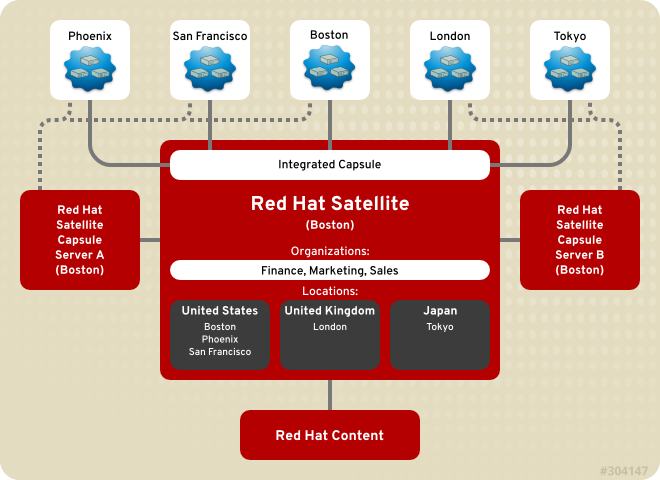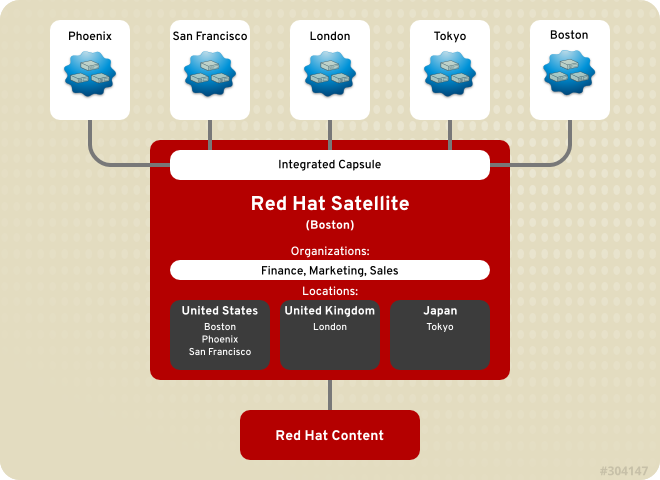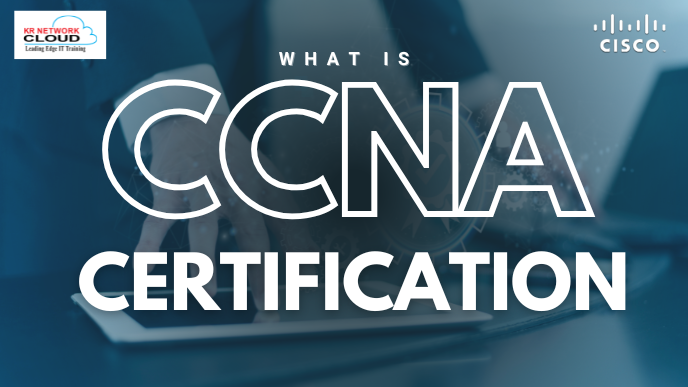RHEL systems management with Red Hat Satellite 6: From Chaos to Control

- KR NETWORK CLOUD
- July 1, 2025
What is Red Hat Satellite 6 & how it is helpful in RHEL systems management?
Red Hat Satellite 6 is a cornerstone of RHEL systems management, providing a centralized platform for administering large-scale Red Hat Enterprise Linux (RHEL) environments. The Red Hat Satellite 6 Administration course (RH403) is 2 months, lab-based training that equips experienced Linux administrators with the skills to leverage Satellite 6 for efficient system management. This article explores the course’s key components, practical applications, and advanced features, offering insights into how Satellite 6 transforms RHEL systems management for enterprises.
Overview of Red hat Satellite 6
The RH403 course is designed for administrators tasked with managing large-scale RHEL environments. It covers the installation and configuration of Red Hat Satellite 6, a powerful systems management platform that centralizes software updates, provisioning, and configuration management. Participants will learn to:
- Install and configure Red Hat Satellite 6 and Capsule Servers.
- Manage software content and subscriptions using environments and content views.
- Create and sign custom RPM packages for software deployment.
- Configure hosts using Puppet for automated configuration management.
- Discover and provision unprovisioned hosts for bare-metal deployments.
The course also compares Red Hat Satellite 6 with Satellite 5, helping administrators understand the evolution in features and terminology. Hands-on labs provide practical experience, making it ideal for enhancing RHEL systems management capabilities.
Attend Live Class Demo
Why Learn Red Hat Satellite 6 Administration?
Red Hat Satellite 6 simplifies RHEL systems management by offering a centralized platform for software updates, system provisioning, and configuration management. It is particularly valuable for large enterprises managing hundreds or thousands of RHEL systems. Benefits include:
- Streamlined Updates: Centralize software distribution and security patches.
- Automated Provisioning: Deploy physical and virtual hosts efficiently.
- Compliance and Security: Ensure consistent configurations across systems.
- Scalability: Use Capsule Servers to manage distributed environments.
By mastering Satellite 6, administrators can achieve efficient, secure, and scalable RHEL systems management, reducing complexity and operational overhead.
Prerequisites before Start learning
The RH403 course is tailored for experienced Linux system administrators with a Red Hat Certified Engineer (RHCE) certification or equivalent skills. Familiarity with Red Hat Satellite 5 is recommended, as the course references its features to highlight improvements in Satellite 6. This training is ideal for those aiming to advance their RHEL systems management skills for enterprise-level environments.
Understanding Red Hat Satellite 6 Architecture
Effective RHEL systems management requires understanding of the architecture of Red Hat Satellite 6. The platform integrates several key components, each contributing to its robust capabilities:
| Component | Description |
|---|---|
| Foreman | An open-source application for provisioning and lifecycle management of physical and virtual hosts, supporting tools like kickstart and Puppet modules. |
| Katello | Manages subscriptions and repositories, enabling access to Red Hat repositories and content tailored to the software development lifecycle (SDLC). |
| Candlepin | A service within Katello that handles subscription management, ensuring compliance with Red Hat entitlements. |
| Pulp | A service within Katello for repository and content management, storing and synchronizing software content. |
| Hammer | A command-line interface (CLI) tool that mirrors most web UI functions, offering flexibility for scripting and automation. |
| REST API | Enables custom scripts and third-party applications to interact with Satellite 6, ideal for advanced automation. |
| Capsule Server | Acts as a proxy for Satellite functions like repository storage, DNS, DHCP, and Puppet master services, enhancing scalability in distributed environments. |

Each Satellite Server includes an integrated Capsule Server, with additional capsules deployable for redundancy and scalability. These components work together to provide a centralized platform for RHEL systems management across physical, virtual, and cloud environments.
How to Install and Configure Red Hat Satellite 6 Server
Installing Red Hat Satellite 6 is a critical step in RHEL systems management. Below are the key requirements and steps for successful installation:
Hardware and Software Requirements to install Red hat satellite 6 servers
- Hardware: A 64-bit system with at least two CPU cores (four recommended) and 12 GB of RAM (16 GB recommended).
- Operating System: Red Hat Enterprise Linux 6 or 7 Server, with a base installation and no third-party unsupported yum repositories.
- Storage: Minimum 6 GB for the base OS, plus 2 GB for Satellite software in disconnected installations, and additional space for content storage (/var/cache/pulp and /var/lib/pulp).
- Network: A current Red Hat Network subscription is required to access Satellite software.
Configuration Steps
- Firewall Configuration: Allow traffic on ports like 80 (HTTP), 443 (HTTPS), 8140 (Puppet), and others using the firewall-cmd command. The predefined RH-Satellite-6 service simplifies this process.
- SELinux: Set to enforcing mode, configurable during OS installation with selinux –enforcing.
- Time Synchronization: Use ntpd (RHEL 6) or chronyd (RHEL 7) for accurate timekeeping.
- Installation: Install Satellite 6 on a dedicated system to avoid resource conflicts. For disconnected environments, use ISO files for installation.

Once installed, access the Satellite Server’s web UI using the host’s URL (e.g., https://satellite.lab.example.com). Accept the self-signed certificate and log in with default credentials (username: admin, randomized password) or customized settings.
Planning Your Satellite Infrastructure
Planning your Satellite infrastructure is crucial for effective RHEL systems management. Red Hat Satellite 6 supports various layouts to meet organizational needs:
- Standalone Satellite Server: A single server manages all functions for multiple locations and organizations, suitable for smaller environments.
- Satellite Server with Local Capsule Servers: Additional capsules colocated with the Satellite Server distributed workload, ideal for larger setups with multiple offices in one region.
- Satellite Server with Remote Capsule Servers: Capsules deployed in remote locations serve local systems, reducing latency and improving efficiency.
- Organization-Based Capsule Servers: Capsules assigned to specific organizations (e.g., Marketing, Sales) for independent management, supporting complex, multi-organization environments.

These layouts leverage Capsule Servers to enhance scalability and performance, making Satellite 6 a versatile tool for RHEL systems management in distributed environments.
Advanced Features of Red Hat Satellite 6
Red Hat Satellite 6 offers advanced features that enhance RHEL systems management:
- Reporting Engine: Introduced in Satellite 6.5, it allows custom reports on host status, subscriptions, and errata, aiding in decision-making and compliance monitoring.
- SCAP Compliance: Plan and configure Security Content Automation Protocol (SCAP) policies to ensure hosts meet compliance standards.
- Ansible Integration: Use Ansible roles and playbooks alongside Puppet for configuration management.
- Container Management: Satellite 6.16 supports pushing containers to the Satellite container registry, enhancing DevOps workflows.
- Errata Management: Search and filter errata by package name or keywords to apply critical updates efficiently.
These features make Satellite 6 a powerful platform for managing RHEL systems in diverse environments.
Real-World Use Cases of Red Hat Satellite 6
Red Hat Satellite 6 is widely used for RHEL systems management in various scenarios:
- Patch Management: Centralizing updates and security patches for RHEL servers.
- Cloud Deployments: Managing RHEL systems on AWS, ensuring consistent configurations.
- Staging and Testing: Using a staging Satellite to test content before production deployment.
- Large-Scale Enterprises: Managing thousands of RHEL systems across multiple locations and organizations.
For example, organizations use Satellite 6 to ensure all RHEL systems are up to date with security patches, reducing vulnerability risks. In cloud environments, it helps manage RHEL instances on platforms like AWS, ensuring consistent software versions and configurations.
Best Practices for RHEL Systems Management with Satellite 6
To maximize the benefits of Red Hat Satellite 6 for RHEL systems management, consider these best practices:
- Infrastructure Planning: Choose the right Satellite infrastructure layout based on your organization’s size, geographical distribution, and organizational structure.
- Regular Content Synchronization: Keep repositories up to date by syncing content from Red Hat and custom sources.
- Access Control: Use roles and permissions to ensure only authorized users perform specific tasks.
- Monitoring and Reporting: Leverage the reporting engine to monitor system health, compliance, and errata application.
- Automation: Use Hammer CLI or the REST API for automating tasks like host registration or content synchronization.
- Disconnected Environments: Use ISO files for installation in secure environments without direct internet access.
These practices ensure efficient, secure, and scalable RHEL systems management.
Start Learning
FAQs – Red Hat Satellite 6
- What are the hardware and software requirements for installing Red Hat Satellite 6 Server?
Red Hat Satellite 6 requires a 64-bit system with at least two CPU cores (four recommended) and 12 GB of RAM (16 GB recommended). It runs on Red Hat Enterprise Linux 6 or 7 Server, with no third-party unsupported yum repositories. Storage needs include 6 GB for the OS and additional space for Satellite software. - How does Red Hat Satellite 6 differ from Red Hat Satellite 5?
Red Hat Satellite 6 is a complete redesign, featuring components like Foreman and Katello. It offers improved scalability, Puppet integration, and advanced content and subscription management compared to Satellite 5, which is based on Spacewalk and nearing end-of-life. - What is the role of the Capsule Server in a Red Hat Satellite 6 infrastructure?
The Capsule Server acts as a proxy for Satellite functions, providing local repository storage, DNS, DHCP, and Puppet master services. It enhances scalability and performance in distributed environments by serving content locally. - Can Red Hat Satellite 6 be used in a disconnected environment?
Yes, Red Hat Satellite 6 supports disconnected environments using ISO files for installation, allowing organizations to manage systems without direct internet access to Red Hat’s repositories, ensuring flexibility for secure environments. - What are the key features of Red Hat Satellite 6 for RHEL systems management?
Key features include centralized software updates, system provisioning, Puppet-based configuration management, custom RPM package creation, and bare-metal host provisioning. These capabilities streamline RHEL systems management and ensure compliance. - How can I plan my Satellite infrastructure for optimal RHEL systems management?
Plan based on the number of hosts, geographical distribution, and organizational structure. Options include standalone Satellite, local or remote Capsule Servers, or organization-based capsules, each tailored to specific scalability and performance needs. - What are some best practices for using Red Hat Satellite 6 in a large enterprise?
Best practices include proper infrastructure planning, regular content synchronization, using roles for access control, monitoring system health with the reporting engine, and automating tasks with ascended 14 with Hammer CLI or REST API for efficient RHEL systems management. - How does the reporting engine in Satellite 6 enhance RHEL systems management?
The reporting engine, introduced in Satellite 6.5, generates custom reports on host status, subscriptions, and errata, enabling administrators to monitor system health, compliance, and updates, thus improving decision-making and RHEL systems management. - What is the process for synchronizing content in Red Hat Satellite 6?
Content synchronization involves setting up repositories, syncing content from Red Hat or custom sources, and managing content views and lifecycle environments to control what content is available to hosts, ensuring efficient RHEL systems management. - How can Red Hat Satellite 6 be used for provisioning bare-metal hosts?
Satellite 6 supports bare-metal provisioning via PXE boot, enabling administrators to discover, provision, and configure new hosts automatically, integrating software and configuration management for seamless RHEL systems management. - How does Ansible integration enhance Red Hat Satellite 6’s capabilities?
Ansible integration allows administrators to use roles and playbooks for configuration management alongside Puppet, offering flexible automation options for RHEL systems management in diverse environments. - What are the benefits of using Red Hat Satellite 6 for cloud-based RHEL systems?
Satellite 6 ensures consistent software updates, configurations, and compliance for RHEL systems in cloud environments like AWS, simplifying RHEL systems management across hybrid cloud infrastructures.
Conclusion
The Red Hat Satellite 6 Administration course (RH403) empowers administrators to master RHEL systems management using a robust, centralized platform. By learning to install and configure Satellite, manage software, provision hosts, and leverage advanced features like Puppet, Ansible, and the reporting engine, administrators can build scalable, secure, and efficient RHEL environments. Whether managing a single office or a global enterprise, Satellite 6 is a game-changer for RHEL systems management.







